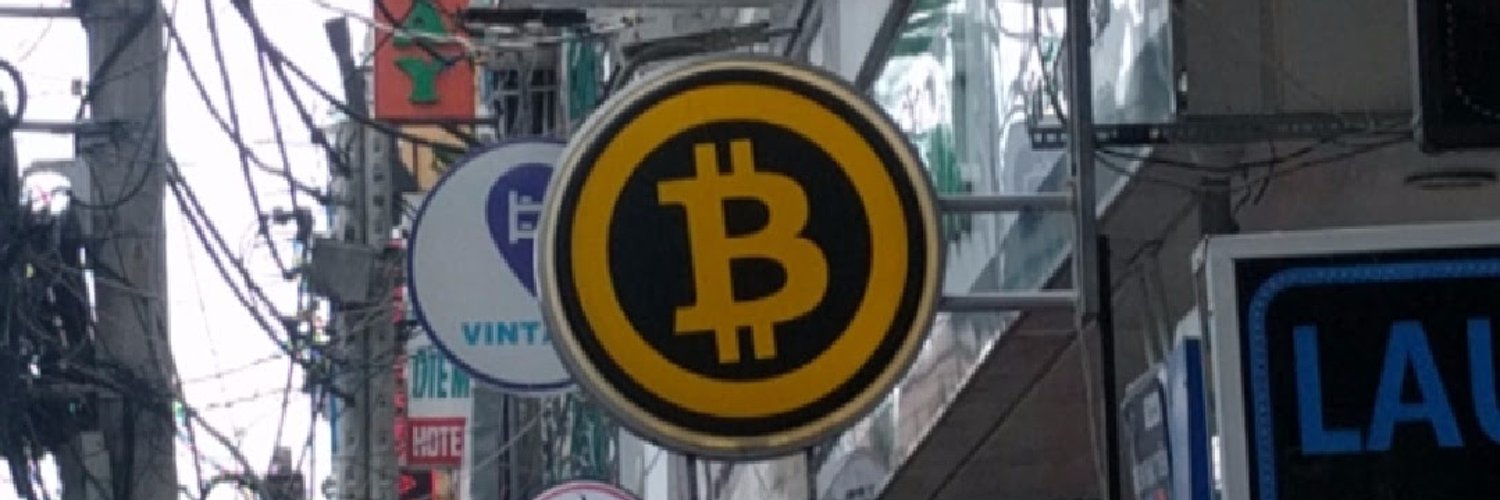#Bitcoin research and analysis since 2014 | As seen in @Forbes @FortuneMagazine @business @WIRED @BitcoinMagazine
Joined January 2011
- Tweets 37,656
- Following 2,811
- Followers 51,227
- Likes 52,861
Pinned Tweet
Just publish a piece over at Protos with miners' thoughts (or lack thereof) on the recent soft fork proposal and the "spam" controversy more generally.
Here's some of what @TomasGreif from Braiins had to say:
"This specific proposal seems very poorly written [as] proposed. There are many fallacies that could damage Bitcoin (for example, if implemented, it could make some Bitcoin unspendable and basically block some users’ funds, something that is currently impossible and has never happened on the Bitcoin network) and tries to impose laws and morality inside the Bitcoin protocol. Bitcoin has no flag or sides, and trying to politicize it is extremely dangerous."
In these times, I am reminded of when Bitcoin Jesus went on CNBC 7 or 8 years ago to claim the new Bitcoin Cash altcoin may cause a Bitcoin mining death spiral, all in the name of advocating for bigger blocks and on-chain Bitcoin coffee payments.
It makes sense to take some time for reflection once your advocacy for a particular change to Bitcoin becomes indistinguishable from an attack on the network.
Privacy-Focused Bitcoin Developer Gets 5-Year Prison Sentence gizmodo.com/privacy-focused-…
Bitcoin mining industry mostly uninterested in spam controversy protos.com/bitcoin-mining-in…
Kyle Torpey retweeted
I've now been banned from the Knots Telegram channel by @GrassFedBitcoin where I earlier today saw @LukeDashjr that he plans his fork being enforced because all mining pools who disagree with him will be thrown in jail.
The debate is over. Enough is enough.
These are attackers of the network willing to throw people in prison to exert their will on the network. If you don't explicitly reject their fork efforts and their actions you are actively complicit with a lawfare style take over of the Bitcoin protocol.
Kyle Torpey retweeted
There seems to be some misunderstanding on this. Contentious Bitcoin soft forks can definitely lead to chain splits. Make sure to only consume pleb slop in moderation.
Here's an explanation on this from @grok:
Kyle Torpey is correct in pointing out that a contentious soft fork like BIP-444 could lead to a chain split. While soft forks are designed to be backward-compatible and often resolve without permanent division if there's majority hashpower support, they can absolutely divide the network into two chains under certain conditions—especially if it's user-activated (UASF) and opponents intentionally mine blocks containing transactions invalid under the new rules (e.g., "chainsplitting-JPEGs" referring to arbitrary data like inscriptions that BIP-444 aims to restrict).
This has happened in past emergency soft forks, and BIP-444's proposal explicitly raises concerns about potential splits due to its temporary restrictions on data storage, which could freeze funds or incentivize disruptive behavior.
Start9's claim that "one side gets wiped out completely" oversimplifies the process—it's not guaranteed, as both chains could persist if there's sufficient support on each side, leading to two viable "bags" as Malachi suggested.
In practice, convergence often happens when the pro-fork side has majority hashpower, causing old nodes to follow the longer valid chain, but contention increases the risk of a persistent split.
Kyle Torpey retweeted
Kyle tracked down miners to ask them about OP Return
They had very little so say
..which is interesting because everyone else won't shut up about it!
Full article with much more detail and comments from mining pools over at Protos: protos.com/bitcoin-mining-in…
Kyle Torpey retweeted
There are over 15,000 Bitcoin nodes running over tor. This is the cypherpunk foundation of the network's resilience against nation state attacks.
Good luck finding another crypto network that even holds a candle to this. Higher throughput networks can't even run nodes over tor.
There are many similarities between the Bitcoin block size war and what's going on now with Knots, but one of the key differences is the lack of involvement from miners.
So far, miners seem generally uninterested in the "spam" controversy that everyone can't stop talking about.
Full article with much, much more: protos.com/bitcoin-mining-in…
Interesting to see bitcoin differentiated from crypto on a mainstream show like @RealTimers. Seems like progress.
"Donald Trump, last week, pardoned a billionaire crypto guy that was deeply involved in his family's own crypto operation, and it seems to have made no news whatsoever."
"With a Trump shitcoin . . . Bitcoin performs a function. The TRUMP coin does not."
-@mcmoynihan
Kyle Torpey retweeted
Sorry but not true.
BetterHash protocol, which Ocean implemented as Datum, does not decentralize anything. Ocean is still the centralized server and is accountable to client usage. Regulators can shut down Ocean, and Ocean can censor payouts (clients who do not comply with Ocean's mandates). There's no actual censorship resistance gained at all. It is pure marketing theater and feel good vibes.
Instead, support open source infra like CKpool, StratumV2 (the non-BetterHash improvements like privacy tooling) if you actually care about censorship resistance for mining.
Coinbase wants you to become a gambling addict in the crypto casino.
You should avoid their platform and just hold bitcoin as long-term savings.
Is Bitcoin Facing Another Civil War? gizmodo.com/is-bitcoin-facin…
Problem: Your bitcoin mining pool has become more heavily regulated and started filtering transactions due to "illegal content" concerns.
Reaction: You need to find a different pool that allows you to choose which transactions go into the blocks you mine.
Solution: Ocean.
















